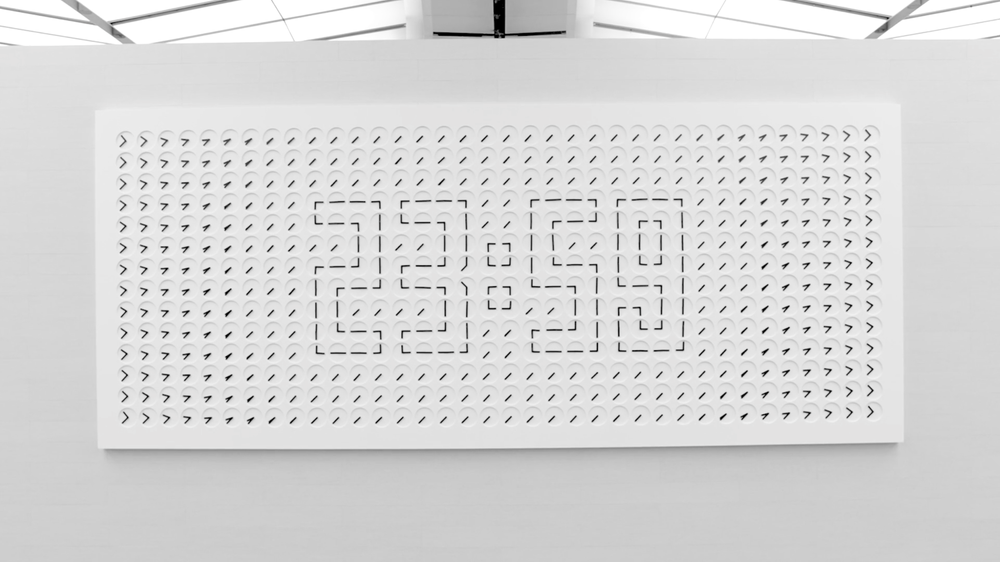
In this fast-paced world where every event depends on the singularity of time, we often overlook the complexity and implications of time in our day-to-day life. A Million Times’ is a kinetic art installation by the Swedish Design studio Humans Since 1982. The work makes use of several clocks that work synchronously to create mesmerizing displays or to show the time. It has been put on display at various locations around the globe, one of the more popular ones being at Singapore’s Changi Airport. The installation was unveiled in 2013 at the design fairs in Dubai and Miami.

In these installations, multiple analog clocks are programmed to perform abstract choreographies and patterns. The clocks work in synchronization to display the time every minute, then go back to working individually. Since the installation revolves around the concept of time passing, it is easy for people to connect with the work in their ways. Moreover, it is a reminder of the constantly changing nature of time.
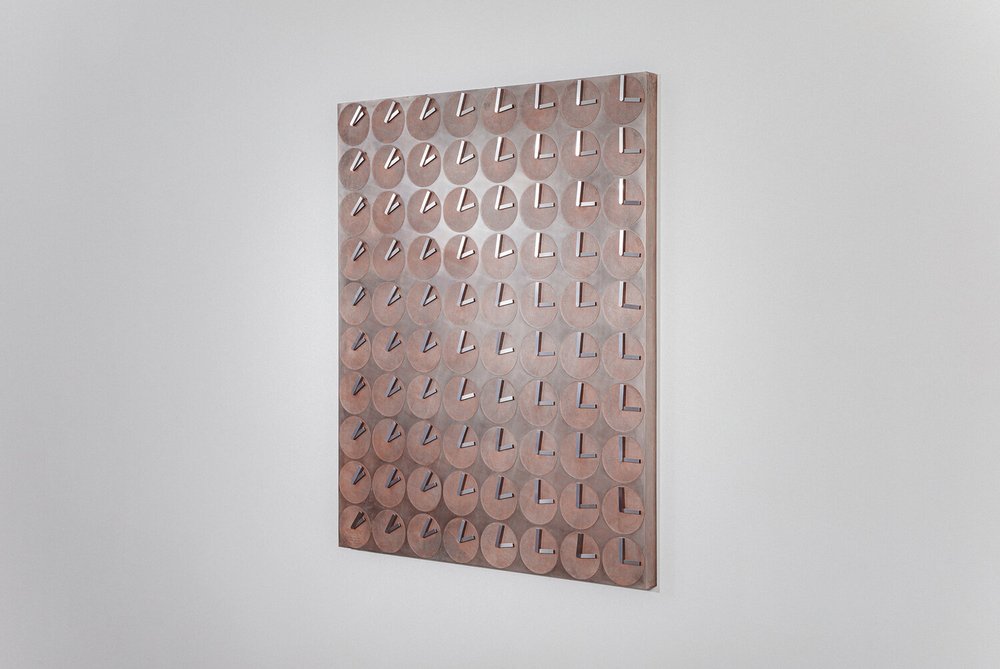
‘A Million Times at Changi’ uses 504 clocks, making it one of the world’s largest kinetic art installations. Visitors to the installation can interact with the clocks by standing in front of them and triggering a motion sensor, which causes the clock face in front of them to change to the current time. This creates a dynamic and ever-changing display, as the time on each clock face is constantly shifting and updating. The installation is designed to evoke a sense of time and the passage of time and to encourage visitors to reflect on their relationship with time and the role it plays in their lives. Due to the large number of clocks used, the installation can display short messages besides time and other graphic displays.
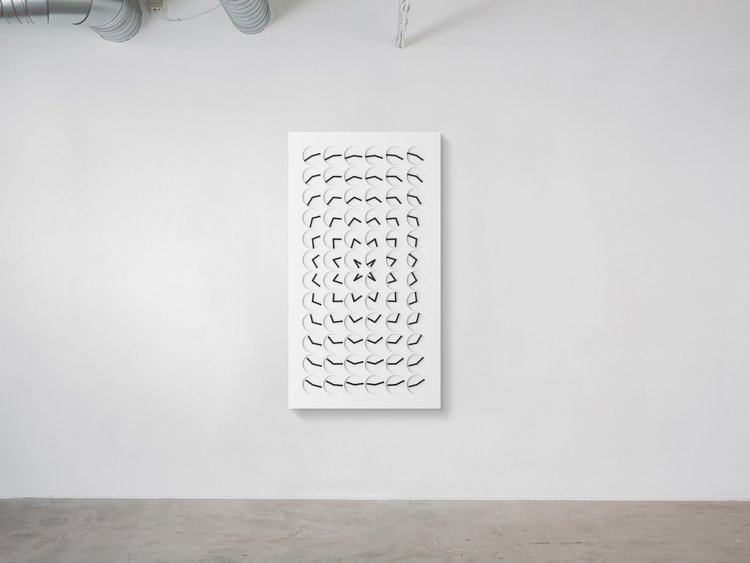
The work is mostly based on the formalist art theory, while the use of technology brings in a post-modernist touch; the use of multiple clocks symbolizes the overwhelming nature of time and the seemingly endless passage of time in our lives. It also nurtures the value of the present time and how as we reflect upon our past we realize that it is just like an old newspaper and our future contains the unknown; to which we develop our questions during the present.
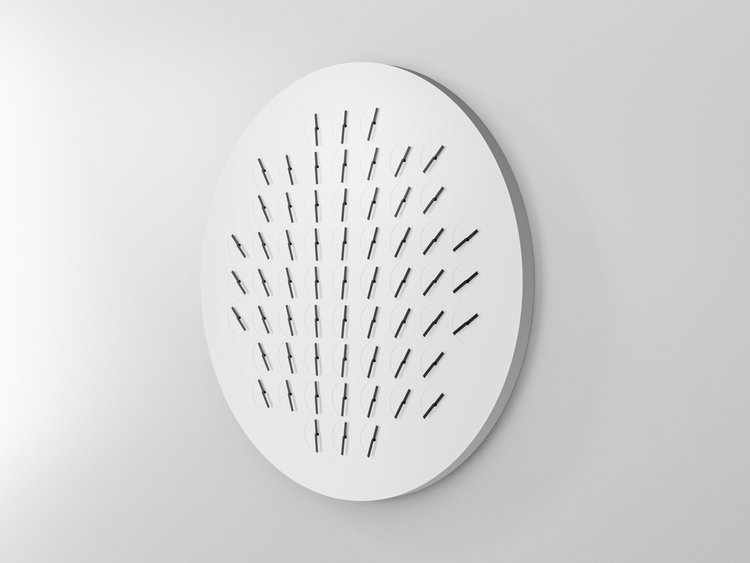
“A million Times” has been exhibited in galleries and museums around the world, and has received widespread critical acclaim for its innovative and thought-provoking design. The installation is a reminder of the fleeting nature of time and the interconnectedness of our world. Further, the work is a celebration of the beauty and complexity of technology and a reminder of the importance of time in our lives.
References:
Photos 1, Featured image: https://www.humanssince1982.com/a-million-times-at-changi
Photo 2,3,4,5: https://www.humanssince1982.com/catalogue

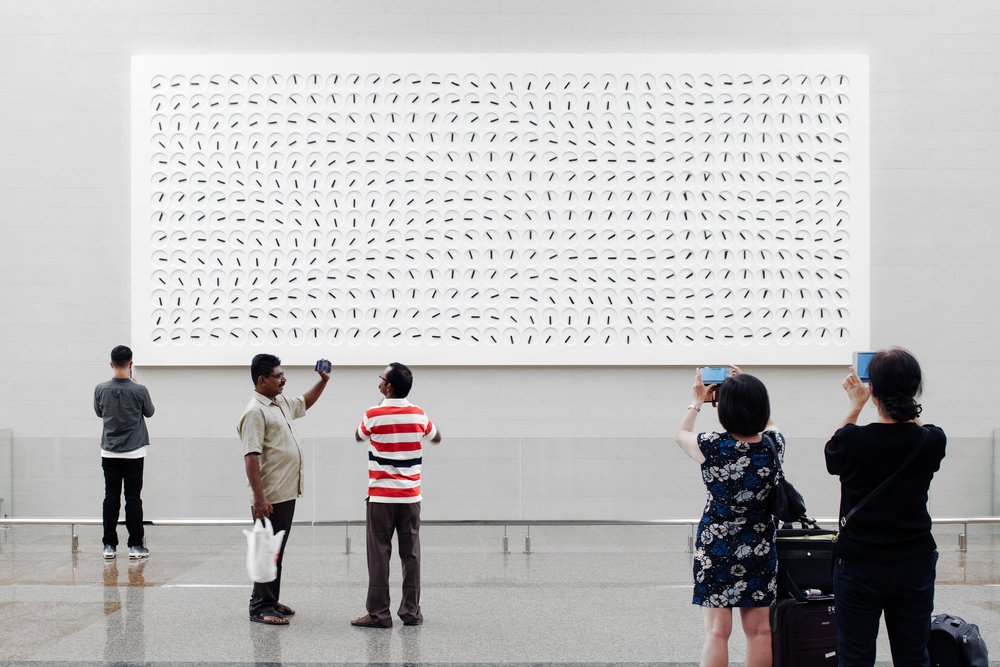
4 Comments. Leave new
Although I find the art piece good looking, I worry that it does not define its own aesthetic. It makes me wonder what aesthetic movement or category these would most represent. You briefly mentioned formalism and post-modernism in this post. Have you considered writing about those art movements and using these clock installations as an example instead of the focus?
Thanks for the comment Will. I am thinking of redoing this post by focusing on the minimalist aesthetic.
This is a really fascinating installation, thanks for sharing it! I’ve always loved pieces that invite you to reflect more deeply on something that has become commonplace. I’m curious about how you would classify this into an aesthetic, to me it falls somewhere between durational art and minimalism.
I agree with you Aidan. This can’t be classified as an aesthetic. I thought we had to pick some artwork and explore its aesthetic instead of writing about the aesthetic itself. Got confused.